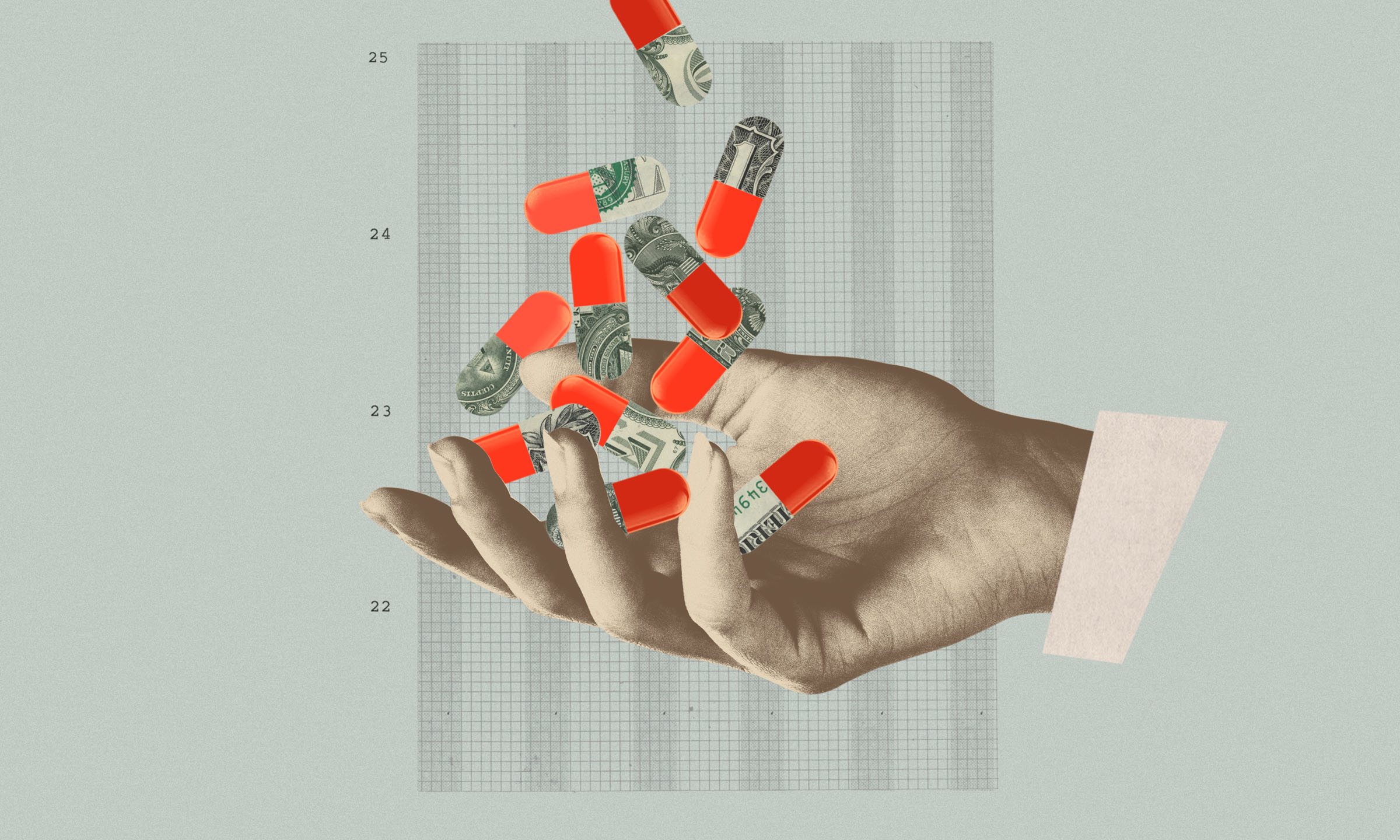Cash or Bust: Why Discount Cards Could Be Key to Medication Adherence
Increasingly, patients are seeking help affording their prescriptions through cash discount cards, and signs suggest that trend won't slow anytime soon. In this article, we explore the pros and cons of prescription discount cards and examine how providers, pharmacists, payers and pharma companies can use technology to help patients understand their affordability options and avoid prescription abandonment.

When patients don’t “take as directed,” what else can be done by healthcare stakeholders to ensure adherence? That conundrum was profound enough in 1985 it prompted then-U.S. Surgeon General Dr. C. Everett Koop to famously remark that “drugs don't work in patients who don't take them.” Drugs don't work in patients who don't take them, National Library of Medicine, Sept. 10, 2017
Solving prescription abandonment is indeed one of healthcare’s holy grails — a long-held, seemingly insurmountable goal that’s taken on almost-mythic proportions — and for good reason. In the U.S., prescription drugs are a necessity for many, with two-thirds of all adults — or more than 131 million Americans — taking prescriptions. Prescription Drugs, Health Policy Institute, Georgetown University, 2021 And yet for many, “take two pills and call me in the morning” is easier said than done.
Studies suggests nearly a third of all prescriptions are never picked up at the pharmacy, and up to half of medications treating chronic conditions, like diabetes or hypertension, are never taken by patients. Interventions to improve adherence to self-administered medications for chronic diseases in the United States: a systematic review, Annals of Internal Medicine, Dec. 4, 2012 This medication nonadherence is costly, too — for patients and the entire healthcare system. Up to 125,000 preventable deaths and a quarter of all hospitalizations can be traced to medication nonadherence, potentially costing the healthcare system between $100 billion and $289 billion a year. Interventions to improve adherence to self-administered medications for chronic diseases in the United States: a systematic review, Annals of Internal Medicine, Dec. 4, 2012
Yet this problem is largely preventable. One of the main barriers keeping people from taking their medications — and, thus, from living healthier lives — is cost. Reasons for Primary Medication Nonadherence: A Systematic Review and Metric Analysis, Journal of Managed Care & Specialty Pharmacy, August 2018
According to the 2022 Medication Access Report, when medications cost too much, many go without. In 2021, 79% of patients went to pick up their prescription and found it cost more than they expected, up from 67% a year ago. Additionally, compared to 2020, more patients last year made sacrifices related to their medications and essential items — with 51% sacrificing medications, 43% sacrificing essentials and 41% modifying their treatment plans to make ends meet.
A silver lining peeks through the clouds, though — a beacon in the distance portending promise.
The 2022 Medication Access Report also found that 90% of patients surveyed in 2021 said they took proactive steps to better afford their medications. For nearly half those patients, that meant talking to their provider or pharmacist about affordability options. And for 38% of patients, that meant using a cash discount card or pharma copay card to afford their medication.
Signs suggest those trends won’t soon slow down, either. If anything, prescription discount cards could become even more prevalent for patients in the years ahead. In this article, we examine how providers, pharmacists, payers and pharma companies can use technology to help patients better understand their affordability options and perhaps finally slay prescription abandonment beast.
Editor: This is the third article in a three-part series about prescription affordability options. You can find the first two articles here:
Prescription discount cards 101
What are prescription discount cards and why are they so popular with patients?
For many patients, finding affordable prices for their prescriptions is a Herculean task with little reward. Every month, prices can fluctuate wildly and even vary from pharmacy to pharmacy. Finding and keeping track of information like insurance and reimbursement information is a challenge — let alone trying to search the internet for list prices across pharmacies. And then repeating the task every month.
Enter: prescription discount cards.
Though prescription discount cards have been around for decades,Prescription Drug Discount Cards: Current Programs and Issues, The Henry J. Kaiser Family Foundation, February 2002 their use is trending upward. In 2021, pharmacy discount cards accounted for 5.4% of all prescription adjudications — up from 3.3% in 2017. Pharmacy Discount Card Utilization and Impact, IQVIA U.S. Market Access Strategy Consulting, August 2022
Given the affordability problems some patients experience, it’s no wonder discount cards — typically offered by private, third-party organizations — are becoming a popular option to help patients save money on their medications. Discount cards do this by offering medications, usually generics, for cash prices at the pharmacy. (A cash price is simply the patient’s out-of-pocket cost of the medication, or the cost of the drug without the use of health plan benefits, whether commercial- or government-issued.)
It may seem counterintuitive, but by skipping benefit plans and paying with cash, patients can sometimes save on their out-of-pocket healthcare costs. This can be particularly true if the patient’s uninsured or on a high-deductible health plan (HDHP). Patients Overpay For Prescriptions 23% Of The Time, Analysis Shows, Kaiser Health News, March 13, 2018 (Individuals on high-deductible plans must pay at least $1,400 out of pocket before reaching their deductible — for those on family plans, it’s $2,800.)
Then again, whether patients have an HDHP or not, it could be more affordable to use a discount card to pay for prescriptions. Though the findings come from 2018, one study found that patients overpay for prescriptions 23% of the time when they use health plan benefits. Patients Overpay For Prescriptions 23% Of The Time, Analysis Shows, Kaiser Health News, March 13, 2018 Many legislative and regulatory changes have been made since then, H.R.5376 - Inflation Reduction Act of 2022, Congress, Aug. 16, 2022 but this could explain why patients are flocking to discount cards and rave about them online through reviews and Net Promoter Scores. GoodRx: The Good Doctor Has Come To Deliver Market-Beating Returns, Seeking Alpha, June 9, 2021
What other affordability options exist?
It’s important to make a distinction between cash discount cards and pharma copay cards. Like discount cards, pharma copay cards — also called copay savings programs, copay coupons and copay assistance cards — help patients afford medications by lowering out-of-pocket costs.
Unlike discount cards, pharma copay cards are issued by drug manufacturers, typically require some type of enrollment and are often used for brand-name drugs.
In general, neither affordability option lets patients use the card in conjunction with government health plan benefits like Medicare or Medicaid. But pharma copay cards can be used with commercial insurance benefits. The cards essentially apply a rebate or discount to the cost of the medication, lowering the patient’s out-of-pocket copay.
Are there downsides to discount cards?
Discount cards can be a helpful way for patients to reduce their out-of-pocket costs, but they’re not a perfect solution. Like pharma copay programs — which some say raise healthcare costs The growing evidence against drug copay cards, Axios, Feb. 15, 2022 — discount cards come with a degree of controversy. Are drug coupons and discount cards good or bad? The answer is complicated, PharmacyToday, Nov. 1, 2020
When patients use a discount card, the transaction takes place outside of the normal claims stream. This means payers can’t surface safety alerts, like drug-utilization review messages, or gauge if a patient could benefit from additional support (e.g., a case manager) to stay adherent. Adherence data and reporting can be a critical component of determining health outcomes.How Data Impacts Medication Access, Adherence, and Utilization, HealthPayer Intelligence, June 6, 2022
An ideal prescription discount card would not only bring visibility to payers so they can bring their expertise to the table when needed. It’d also work for all healthcare stakeholders.
For instance, patients can find the flood of discount cards hard to navigate and use, and some only work some of the time. Another issue is that discount cards only offer a discount on the retail price of a medication, which is often much higher than the actual price paid by the insurance company. This means that patients with high deductibles or coinsurance may still have to pay a decent amount out of pocket, even with a discount card.
Another issue is that discount cards are not accepted by all pharmacies. The popular discount card mentioned above recently saw its stock tumble after one retail pharmacy chain stopped accepting its card. Q1 2022: Letter to Shareholders, GoodRx, May 9, 2022 Plus, some pharmacies may not accept discount cards from certain organizations, or they may only accept them for certain medications. That can make it difficult for patients to find a pharmacy that'll accept their discount card.
On the other hand, there are solutions that can surface price for the patient and pharmacy in real time. This helps the pharmacist save time by not submitting multiple claims to determine which card presents the most economical price.
The future of prescription discount cards
Examining legislative, regulatory and other healthcare industry trends
Despite those challenges, prescription discount cards are a valuable tool that can help patients save money on their medications. That’s the main reason the future of prescription discount cards is likely to be more expansive and inclusive than it is today — they work for patients.
We may start to see even newer options, with new models, enter the market. Take the cost-plus-meager-markup approach, for instance. One new discount card company Cost Plus Drugs: Mark Cuban's New Company Sells Ultra-Cheap Prescriptions, CNET, June 27, 2022 is taking that tact, and if it’s successful, others could mimic its approach since it’s easily replicable.
Another trend to watch is how payers and PBMs make peace with discount cards as another patient tool and embrace their existence. Given the popularity of discount cards with patients, and the flood of discount card options, you may start to see insurers “self-disrupting” by incorporating discount cards into their plans.
Pharmacy benefit managers (PBMs), meanwhile, will look for and require confirmation a discount card was used instead of the benefit to show the patient was still adherent to therapy — just in a different way. This will be a key part of interoperability moving forward.
Other changes could come in the pharmacy space, too. A few years ago, gag clauses were lifted, freeing pharmacists to start affordability conversations with patients. Legislation Signed Into Law Prohibiting 'Gag Clauses' for Pharmacies, Pharmacy Times, Oct. 10, 2018
When all affordability options are visible, whether at the doctor’s office or the pharmacy counter, the patient truly becomes empowered.
While that move was largely positive, the lingering effects of gag clauses are still being felt. Some pharmacists might not feel fully free to discuss pricing with patients due to contractual obligations with PBMs. But as pharmacists begin to further distance themselves from gag laws, their role in affordability conversations could quickly change.
Legislative and regulatory winds are blowing in that direction. Earlier this year, the Federal Trade Commission announced it’s investigating PBM practices like gag clauses. FTC Launches Inquiry Into Prescription Drug Middlemen Industry, Federal Trade Commission, June 7, 2022 The outcome of that case could be a catalyst to finally help pharmacists trust that they can act in their patients’ best interests.
Those moves, if they fall like dominoes, could impact patients and further push discount cards into a more integral role in the health insurance landscape. And as patients grow more savvy in using multiple discount cards to seek out the best deals on their medications, the possibilities grow exponentially.
The ideal future state can be found within true interoperability. It’s here that potential exists to drastically change the prescription drug landscape. This could be especially relevant as more benefit designs start to include visibility into all price options available for patients: discount cards, copay and health plan benefits.
When all affordability options are visible, whether at the doctor’s office or the pharmacy counter, the patient truly becomes empowered. And they no longer have to shoulder all the burden for finding the lowest price at the pharmacy counter when paying cash. The best price wins, yes. But — most importantly — so does the patient.
The ideal state for patients is closer than we think
The next stage brings all these capabilities together so that, just because somebody shows up with one discount card to a pharmacy counter, doesn't mean they’re stuck with that price. Instead, they’re able to easily compare costs across discount cards and choose the best available option for them.
That's a wave growing on the horizon. Products accomplishing similar outcomes already exist in the market and within two years, patients could start to notice the difference at the pharmacy counter.
When that wave starts to crest, technology will be there in the background, helping patients afford their medications. But the benefits won’t stop there. Imagine a world where providers, pharmacists, payers and pharma companies can track the use of prescription discount cards to monitor the efficacy of the program and make necessary changes.
Then the barriers to medication adherence shift, and the tides turn. Because once a patience can afford their medications more regularly, the focus becomes keeping them adherent. Sure, it’s a different problem to solve. But it’d be a welcome one after decades of simply trying to get patients the medicine they need to live healthier lives.
I, for one, look forward to that day in the not-too-distant future. And the evidence suggests patients do, too.
To learn more about the current state of medication access, read the 2022 Medication Access Report.
The latest healthcare insights, floated right to your inbox.





